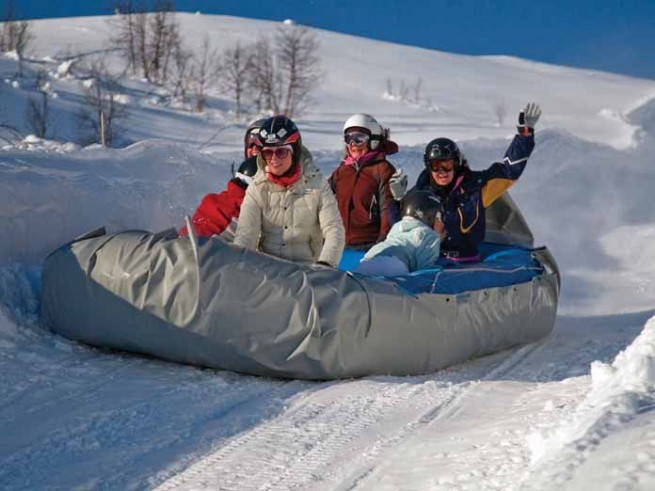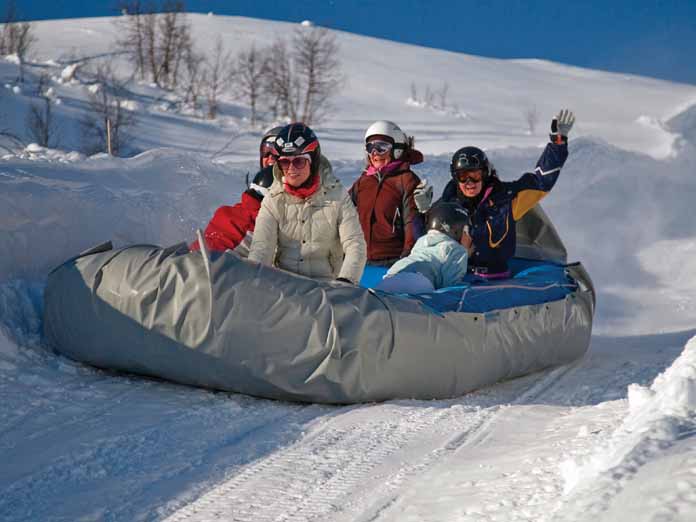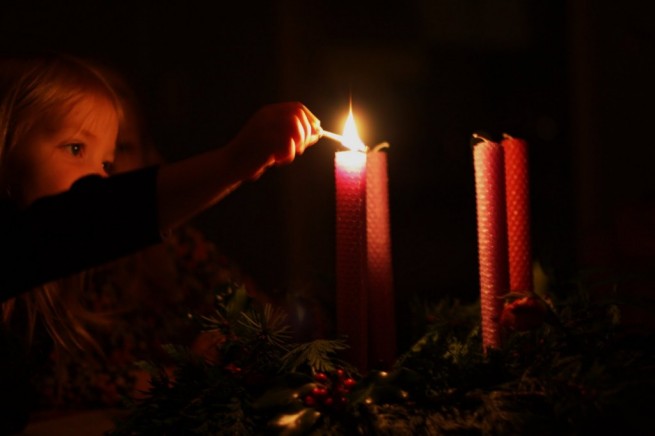About Kristiansund
The town municipality Kristiansund is situated at Nordmøre in Møre and Romsdal. With its 23 903 inhabitants the town centre is spread out on four islands: Nordlandet (The North Land), Innlandet (The Inland), Kirkelandet (The Churchland) and Gomalandet. The town received status as town in 1742 and was then named Christianssund. The town’s name was disputed, since many wanted the old Norwegian name Fosna instead of the name it got when Norway was in union with Denmark. The name struggle ended in 1929 when half of the town’s citizens marched through the streets, but the stride ended by referendum. More than 91 % voted against a name change, and the only difference is the modern spelling and that the letter N after the name (standing for North) was deleted when zip codes in Norway were established. The N was important to distinguish mail to Kristiansund from mail to Kristiansand on the south coast of Norway, which had S (South) behind its name.

The Tahiti Festival
The first Tahiti Festival was arranged in 2000. That year 500 visitors gathered at Dødeladen Café with a tent outside. Since then the festival has been extended both in duration and number of visitors. The past few years the festival has lasted for one week and has been visited by around 20.000 people.

– When we started the planning of this madness at the end of the nineties we couldn’t even dream about that the festival should become so big. I did not dream about being a festival manager either. But it is fun, and every year I am looking forward to it. Nothing pleases me more than to see people enjoying themselves together with old and new friends in the historical surroundings at Tahiti. The festival is framed by Norwegian coastal history, and is therefore something special, says the founder and spiritual leader of the Tahiti festival, Frode Alnæs.

-In addition to preserve the unique buildings on the site, my goal has been to recreate the atmosphere of the old town, called Tahiti. By culture work, voluntary communal work and enthusiasm we managed to refresh this demolish threatened district.

The Inland district, with its largest remaining compressed wooden buildings in all of Møre and Romsdal, is now almost completely renovated. The establishment of Dødeladen and the Tahiti Festival have given favorable conditions to new establishments like Thon Hotel Kristiansund, Barcarole Bar, Arnulf Øverland Gallery, Kjønnøy Quai and the newcomer, The Football Pub on the Tahiti Quai. All this has happened during a very short period of time. This is a good reason to visit Kristiansund during the Tahiti Festival.

– Kristiansund has always been a town looking outwards to the world and taken the world back home. No one knows for sure how the name Tahiti originated. It is only those who feel confident about their own identity, their own background and their own belonging, who dare open themselves to external impulses. To know your own history and feeling confident about own anchoring is a necessity to open up and letting in new impressions and influences. When traditions meet new impulses, an exciting culture arises. New things are created. Dynamics are trigged off. That is Tahiti, says an enthusiastic Alnæs.

The Tahiti Festival is arranged annually by the end of June/ beginning of July. We visited the Festival from 27th June to 1st of July, and there were several attractions, among them the singers Jan Eggum from Bergen and Halfdan Sivertsen from Bodø, Kaizers Orchestra, the pop group Di Derre and Jarle Bernhoft. By the way, did you know that the founder and lead singer in the band Di Derre is the famous international bestselling thriller author Jo Nesbø?

The festical included night rock, a matinee and a children’s festival. This year there were concerts by Henning Kvitnes and Hilde Louise Asbjørnsen in addition to quiz with the TV personality Dan Børge Akerø.
The whole town is influenced by the Tahiti festival during this period, and should you have the opportunity to visit the town by the end of June, you will be granted a festive audience and high level music.
We attended the Di Derre concert, and it was fun to experience Jo Nesbø and the band. They gave everything. The audience applauded enthusiastic, not least when the group performed their hit “Jenter som kommer, og jenter som går” (“Girls who are coming, and girls who are leaving”).
With the Sund ferries you easily get to and from the four islands.
The fishing village Grip
The very small island Grip, which once was the smallest municipality in Norway, hosts Norway’s smallest stave church and the world’s smallest fire engine.

The island group was until 1964 an independent municipality with 115 grooved and weather-beaten inhabitants. Today its charming and well-kept buildings are summer residences for the people who once lived here or their descendants.

Today Grip is the smallest district in Kristiansund, situated 22 miles out in the ocean, surrounded by 200 islets and rocks, about 40 minutes by the Grip Express ferry from the capital of Nordmøre. The island’s last inhabitant threw in the towel and left the place, his rubber boots and sou’wester just before Christmas 1974. Most of the residents packed their suitcases in the mid 60s.

The island is less than a square mile, but its lighthouse is large. The Grip Lighthouse on Bratthårskollen islet is more than 154 feet tall and Norway’s tallest.
The Grip Express
From end of May to end of August the Grip Express has daily departures to the island with its yellow and red houses, small, charming streets, soccer field, an inn and the village’s own power station by the open sea, west of Smøla and Tustna.

A visit to Grip is like entering straight into the idyllic skerries from the popular Swedish TV production «Vi på Saltkråkan» (“De Kinderen van de Zoutkreek” in Dutch). The time seems to have stood still for quite a long time in this caustic fishing village.
Fire engine
Last year the island outside Kristiansund got a new attraction, the World’s smallest fire engine. A particular designed vessel with water pump and four hoses, the size of a pedal car, was constructed by the Kristiansund Fire Brigade, and suited for turn-out in the narrow streets and sharp house corners on Grip. With the “fire engine” in place by the island’s own fire house, everyone on Grip may have a good night’s sleep all through the summer.
In the middle of the island, protected by the buildings and at the island’s highest point, you will find the little red stave church, built around 1300. It has been a place for gatherings in sorrow and happiness. The altar closet is a gift of gratitude from the Dutch princess Elisabeth, who in 1515 was saved by Norwegian seamen during a violent storm. The wall paintings are from about 1620.

The Atlantic Road
The Atlantic Road (Mainroad 64) runs zig zag above eight low bridges by the open sea, and connects the islands between Molde and Kristiansund. Hustadvika is a notorious coastal line and is dramatic when it storms. In lard weather one might observe seals and whales.

The road is about 13 miles long and was opened in 1989, after a construction period of six years.
The Atlantic road is about half an hour’s drive through the Atlantic Tunnel from Kristiansund. The Atlantic Tunnel is about 12 miles long and 800 feet deep. Coming out of the tunnel you may drive through exciting Averøy with Kvernes stave church, and after that out on the wild and scenic coastal stretch towards Hustadvika.
The Atlantic road with its unbelievable coastal line and price awarded architecture, is a part of the national tourist road between Bud and Karvåg.
There are four organized picnic areas with hiking roads and viewpoints. These have brave architectural forms, and some of them are popular among sports fishers.
We recommend a stop and buffet lunch at Bjartmars Favorittkro with a fantastic view to the ocean and the islets. You will be served tasteful traditional Norwegian food emphasizing Norwegian ingredients.
Stay in Kristiansund
The newest hotel in Kristiansund is the Thon hotel, but there are also Grand and Rica hotels.
Dining in Kristiansund
If you ask the locals where they would go for a pleasant meal, they immediately say Smia or Brasseriet. Barcarole Tapaskjeller on the Inland is also popular with extraordinarily good food. The Grip Express has a stop there.
Text and pictures: Tor Kjølberg






























 Perhaps this emerald city surrounded by fjord and sea fed the artistic imaginations of its inhabitants the more abundantly as a result. Visual artists thrived here, and so did those engaged in textiles and crafts. No self-respecting practitioner of needlework today would be without a supply of the evenweave cotton fabric used for cross-stitch work known as hardanger cloth, after the Hardanger Fjord nearby. What’s more, the hardanger fiddle with its second set of sympathetic strings, is Norway’s national instrument and its playing style is alive and well not just in Norway but among fiddlers from Northumberland to the New World.
Perhaps this emerald city surrounded by fjord and sea fed the artistic imaginations of its inhabitants the more abundantly as a result. Visual artists thrived here, and so did those engaged in textiles and crafts. No self-respecting practitioner of needlework today would be without a supply of the evenweave cotton fabric used for cross-stitch work known as hardanger cloth, after the Hardanger Fjord nearby. What’s more, the hardanger fiddle with its second set of sympathetic strings, is Norway’s national instrument and its playing style is alive and well not just in Norway but among fiddlers from Northumberland to the New World.




























